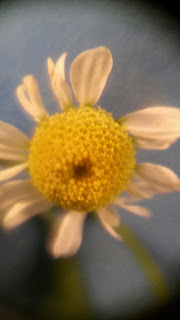This is in response to a question about the seasonal changes in foraging,what is available?. It will also be a short sketch of what is out there along Cloverlea and Rolandvue. The summary at least at the foraging 101 level is --not much. You would need to be both hunter and gatherer. And fire-builder. The little remaining food out there would need proper cooking to break down the cell walls, aid digestion. If you can't build a fire your plant identifications will be mostly worthless.
There is still a lot of green. I will not picture the dandelions, plantain, and dock. They are still there and probably still useful in emergencies. Most references suggest the early leaves, particularly in the spring. In the fall there is a tendency for the nutrients to concentrate more in the roots, there is not much science on the nourishment left in the fall greens. There is the wild onion/garlic which will be there most of the winter. With softer soils they can be pulled, may require digging to get the small white bulbs. This would be a little support and prevent scurvy. Greater celandine is still up, has some medicinal uses but a toxic orange sap, creeping charlie is green and probably safe. Next to the wood poppy(celandine) was winter creeper. This is a newly noticed invasive vine also not popular as a forage.
There does not seem to be good use for the holly. The birds can eat the holly berries and us apex predators eat the birds. Ivy is also not generally suggested as forage although V mentioned that it can be an animal feed when necessary, not a preference. The arbor vitae can provide a tea with vitamins but not much calories. Most of the invasive vines have died back, the kudzu and the porcelain berry. The acorn crop seems light this year, it does go in cycles, and acorns take almost as much energy to prepare as they yield in form of food. It would be better to let the feral pigs eat the acorns and the beechnuts, then enjoy a luau. But I have not seen many pigs eating the mast at the end of Wagner Road.
You could chew on the twigs of the spice bush, corner of Cloverlea and Rolandvue, to assuage the hunger pangs. I can imagine the ancients approaching the winter solstice with a feeling of unease.
 |
| Wild garlic,species of onion,allium oleraceum, present most of winter |
 |
| Garlic mustard, looks healthy,same smell and taste, some vitamins? |
 |
| Greater celandine,toxic, some herbal uses when properly prepared |
 |
| probably mock strawberries, leaves edible, variable GI effects |
 |
| Ground ivy, edible in moderate quantities,should be creeping, attached at nodes, mint family |
 |
| Arbor Vitae, tea of terminal leaves can supplement vitamins. |
 |
| A lot of holly with berries but not forgeable |
 |
| Also a lot of Poke Salad, looks tempting but poisonous. |












